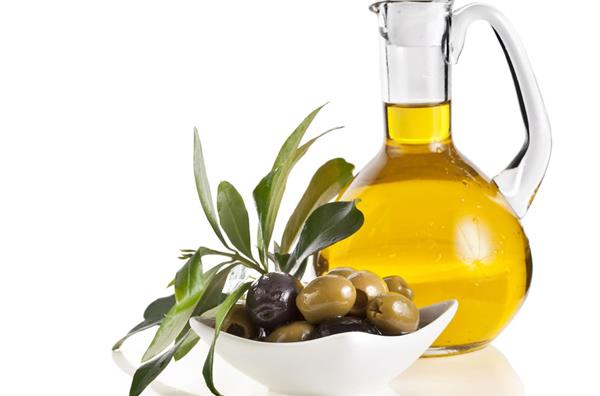The use of olive oil and the fertilization method of olive
Olive oil has many functions, such as promoting blood circulation, improving digestive system, beauty and so on, but many people are afraid that harmful substances will be produced after cooking with olive oil, so will this happen? Let's take a look.

I. the efficacy and function of olive oil
1. Promote blood circulation
Olive oil can prevent arteriosclerosis and arteriosclerosis complications, high blood pressure, heart disease, heart failure, kidney failure, cerebral hemorrhage.
2. Improve the function of digestive system.
Olive oil contains more unsaturated fatty acids than any vegetable oil, rich in fat-soluble vitamins and antioxidants such as vitamin A, D, E, F, K and carotene, and does not contain cholesterol, so the digestion and absorption rate of human body is very high. It has the function of reducing gastric acid, preventing the occurrence of gastritis and duodenal ulcer, and can stimulate bile secretion, stimulate the activity of trypsin, degrade oil and be absorbed by intestinal mucosa, so as to reduce the occurrence of cholecystitis and gallstones. There is also moisturizing function, long-term consumption can effectively relieve constipation.
3. Protect the skin
Olive oil is rich in squalene and essential fatty acids that have an excellent affinity with the skin. It absorbs quickly and effectively keeps the skin elastic and moist. Olive oil is rich in monounsaturated fatty acids, vitamins E, K, A, D and phenolic antioxidants, which can eliminate facial wrinkles, prevent skin aging, protect skin, protect hair and prevent chapping of hands and feet. it is a cosmetic and skincare product that can be eaten. In addition, smearing the skin with olive oil can fight ultraviolet rays and prevent skin cancer.

Is olive oil suitable for stir-frying
Against hot stir-frying with olive oil, mainly focused on the boiling point, in vegetable oil, olive oil boiling point is the lowest, followed by rapeseed oil, the boiling point is too low, high temperature cooking may exceed the boiling point and smoke, so it will produce harmful substances. But in Italy, Spain and Greece, people only use olive oil, often cook and fry, and don't eat much. This is because the boiling point of refined olive oil is much higher.
Another worry is that olive oil, an oil with a low boiling point, can form trans fatty acids if it is overheated. This is possible, but only in the case of long-term high-temperature heating and repeated use, if not repeatedly used, it will take several hours of high-temperature heating to form trans fatty acids, which will not happen in self-cooking.

Fertilization is crucial to improve the quality of olive oil extracted from olives, so let's take a look at how to fertilize olives.
Third, the fertilization method of olive
1. Ditching and fertilization
The method of ditching fertilizer application is used for base fertilizer. A circular trench or symmetrical trench is dug outside the projection of the crown, with a depth of 40m / m and a width of 30m / m. The fertilizer is applied into the ditch and mixed with the soil to cover the soil. At present, this method of fertilization is rarely used in Italy. The reason is time-consuming and time-consuming. However, the olives planted on the four sides and scattered in a small amount are still fertilized by trenching.
2. Spread fertilizer
To spread fertilizer is to spread the fertilizer evenly on the surface of the soil around the crown of the tree and turn it into the soil with a tractor ploughing and raking. The depth of ploughing and harrowing is 5m / m / m. The application of fertilizer is still combined with ploughing, turning and pressing green fertilizer.
3. Drip irrigation and fertilization
This is a new method of fertilization. When applying fertilizer, the fertilizer is dissolved into the fertilizer tank of the drip irrigation system, and the fertilizer is fed into the soil layer of the olive root along with the drip irrigation pipe. Professor Fontanacha pointed out that no matter which method of fertilization is used, phosphorus and potash fertilizer is required to be used in winter. The suitable depth of application into the soil is 25m / m ~ 30m. 45% of the nitrogen fertilizer is applied before spring germination. The amount of nitrogen fertilizer applied to olive trees in the high-yielding stage was 2x3 before sprouting, and that of 1bum3 was applied at the hardening stage.

It seems that as long as it is used properly, olive oil will not produce harmful substances, generally speaking, repeated use of heated cooking oil will produce harmful substances, while cooking at home generally will not occur, so we can rest assured to eat oh.
Related
- Wuhan Hospital Iron Tree Blooming Result Was Instantly Frightened by the Gardener Master
- Which variety of camellia is the most fragrant and best? Which one do you like best?
- What is the small blue coat, the breeding methods and matters needing attention of the succulent plant
- Dormancy time and maintenance management of succulent plants during dormancy
- Minas succulent how to raise, Minas succulent plant pictures
- What are the varieties of winter succulent plants
- How to raise succulent plants in twelve rolls? let's take a look at some experience of breeding twelve rolls.
- Attention should be paid to water control for succulent plants during dormant period (winter and summer)
- Watering experience of twelve rolls of succulent plants
- Techniques for fertilizing succulent plants. An article will let you know how to fertilize succulent plants.



